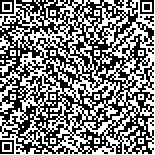李雪明,刘孟,王奎,等.体外冲击波联合肌电生物反馈对痉挛型脑瘫患儿下肢运动能力的影响[J].中华物理医学与康复杂志,2023,45(10):917-921
扫码阅读全文

|
| 体外冲击波联合肌电生物反馈对痉挛型脑瘫患儿下肢运动能力的影响 |
|
| |
| DOI:10.3760/cma.j.issn.0254-1424.2023.10.011 |
| 中文关键词: 体外冲击波治疗 肌电生物反馈 痉挛型脑瘫 下肢运动功能 |
| 英文关键词: Extracorporeal shockwave therapy Electromyographic biofeedback Spastic cerebral palsy Lower limb motor function |
| 基金项目:安徽医科大学第二附属医院(2021年度)临床研究培育计划(2021LCYB06) |
|
| 摘要点击次数: 3810 |
| 全文下载次数: 4504 |
| 中文摘要: |
| 目的 探讨体外冲击波(ESWT)联合肌电生物反馈对痉挛型脑瘫患儿下肢运动能力的影响。 方法 选取2~7岁痉挛型脑瘫患儿50例,按照随机数字表法将其分为对照组和实验组,每组25例。两组患儿均接受肌电生物反馈和常规康复治疗,实验组在此基础上给予低能量ESWT治疗。治疗前及治疗8周后(治疗后),采用肌电设备采集两组患儿胫骨前肌的积分肌电值(iEMG)和均方根值(RMS),利用改良Ashworth量表(MAS)、改良Tardieu量表评定法(MTS)、粗大运动功能评定量表(GMFM-88)D区与E区分别评定两组患儿的下肢痉挛程度及运动能力。 结果 治疗前,两组患儿胫骨前肌表面肌电iEMG和RMS,MAS、MTS、GMFM-88结果比较,差异无统计学意义(P>0.05)。治疗后,两组患儿胫骨前肌表面肌电iEMG和RMS,MAS、MTS中R1、MTS中R2与R1的差值、GMFM-88 D区和E区结果均较组内治疗前改善(P<0.05)。实验组治疗后胫骨前肌表面肌电iEMG[(67.04±12.84)μV·s]和RMS[(69.32±12.84)μV],MAS[(1.98±0.60)分]、MTS中R1[(19.28±5.62)°]、MTS中R2与R1的差值[(7.16±5.11)°]、GMFM-88 D区[(30.65±5.05)分]和E区[(56.81±7.36)分]结果均较对照组改善优异(P<0.05)。 结论 ESWT联合肌电生物反馈能较好地改善痉挛型脑瘫患儿的下肢痉挛程度及运动功能。 |
| 英文摘要: |
| Objective To explore the effect of combining extracorporeal shockwave therapy (ESWT) with electromyographic biofeedback on the motor functioning of children with spastic cerebral palsy. Methods Fifty children with spastic cerebral palsy (2-7 years old) were randomized into a control group and an experimental group, each of 25. Both groups received routine rehabilitation and electric stimulation therapy with electromyographic biofeedback, while the experimental group was additionally provided with ESWT. Before and after 8 weeks of treatment, integral electromyograms were recorded and the root mean square values of the electromyogram recorded from the tibialis anterior muscle were computed. Lower limb spasticity and motor ability were evaluated by using the Modified Ashworth Scale (MAS), the Modified Tardieu Scale (MTS), and the D and E regions of the Gross Motor Function Measurement Scale (GMFM-88). Results After the treatment the results of both groups had improved significantly in terms of the surface electromyography of the tibialis anterior muscle, MAS scores, R1 in the MTS and the difference between R2 and R1, and the GMFM-88 regional scores. All of the improvements were significantly greater in the experimental group than in the control group, on average. Conclusions Combining ESWT with EMG biofeedback can better relieve lower limb spasticity and improve the motor functioning of children with spastic cerebral palsy. |
|
查看全文
查看/发表评论 下载PDF阅读器 |
| 关闭 |